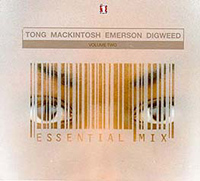Digital Aesthetic
Matthew Hutson, English 111, Brown University (1998)
Along with fashioning new digital tools, we've established an entirely new digital aesthetic. Just like every other transition in every other kind of media, the digital revolution has brought with it new standards for what we consider beautiful. Now that we, as a society, have become more familiar with the world of binary numbers, we have begun to recontextualize much of the information around us. It seems to me that digital information's freedom from any particular physical manifestation would prevent the fetishism of contexual artifact, but we still have found a way to emphasize its unique features. Many painters, for example, have incorporated the marks of a particular brushstroke (an artifact left by the artist's physical expression of an abstract ideal) into their works as an integral element of the paintings' beauty. Digital images resist such physical ideosynchrasies, so instead we emphasize certain graphical manifestations of its abstract nature, notably its discrete, chunky blocks of color. In the two electronic music CD covers below, designers have filtered faces through bar code images, another signifying mark of the digital. (By the way, I highly recommend both double-CD's: Essential Mix 2 and Dream Injection 4.)


 In Digital Mosaics, Steven Holtzman provides the example of Xerox's logo. Partially smooth, partially chunky, the "X" straddles the border between digital and analog, presumably hinting at where the company has come from and where the company is going. Computer art, like any other medium of art, has limitations. We could sit around and mope about these limitations, or we could take them in stride. Holtzman also points out that these limitations helped decide the theme and plot for the first computer-animated feature film, Toy Story. Have you ever noticed how computer-generated humans tend to look plastic and artificial? Pixar Studios avoided this dilemma by making the main characters plastic and artificial, toys.
In Digital Mosaics, Steven Holtzman provides the example of Xerox's logo. Partially smooth, partially chunky, the "X" straddles the border between digital and analog, presumably hinting at where the company has come from and where the company is going. Computer art, like any other medium of art, has limitations. We could sit around and mope about these limitations, or we could take them in stride. Holtzman also points out that these limitations helped decide the theme and plot for the first computer-animated feature film, Toy Story. Have you ever noticed how computer-generated humans tend to look plastic and artificial? Pixar Studios avoided this dilemma by making the main characters plastic and artificial, toys.
Realistic hair is almost impossible to render on a computer. That's why computer-generated humans are frequently bald. This has, in turn, led us to associate futuristic aesthetics with shiny bald heads. In Niel Stephenson's Snowcrash, the avatars (computer-generated hominoid figures used to represent real people in a virtual world) had their own aesthetic, too. The "Brandy's," or less wealthy female characters had eyelashes made of solid chunks that batted wildly. Whether one lets this define a new form of beauty, however, is up to personal taste. Nicholas Negroponte, in his book Being Digital, decrys our acceptance and appreciation for the limitations that early digital systems imposed on our eyes:
Unfortunately, the consumer has been trained to accept the jaggies as given. We even seem to be turning this artifact into a kind of mascot in much the same way that graphic designers frequently used that funny, magnetic-readable font, MICR, in the 1960's and 1970's to create an "electronic" look. In the 1980's and 1990's designers are doing this again by exaggerated, aliased typography to mean "computerness." Today there is no need for lines and characters to be anything less than print quality and perfectly smooth. Don't let anybody tell you otherwise. (108)
Rather than accepting limitations and conforming one's own preferences to accomidate these limitations, many innovators have used the unique traits of particular media to add meaning to the content of a message. William Burroughs expresses scattered thoughts and nonlinear mindsets through scattered words and loosely organized narrative. Jacques Derrida shows how language shapes what we say and illustrates its power to confine through intentionally inaccessible writing.
